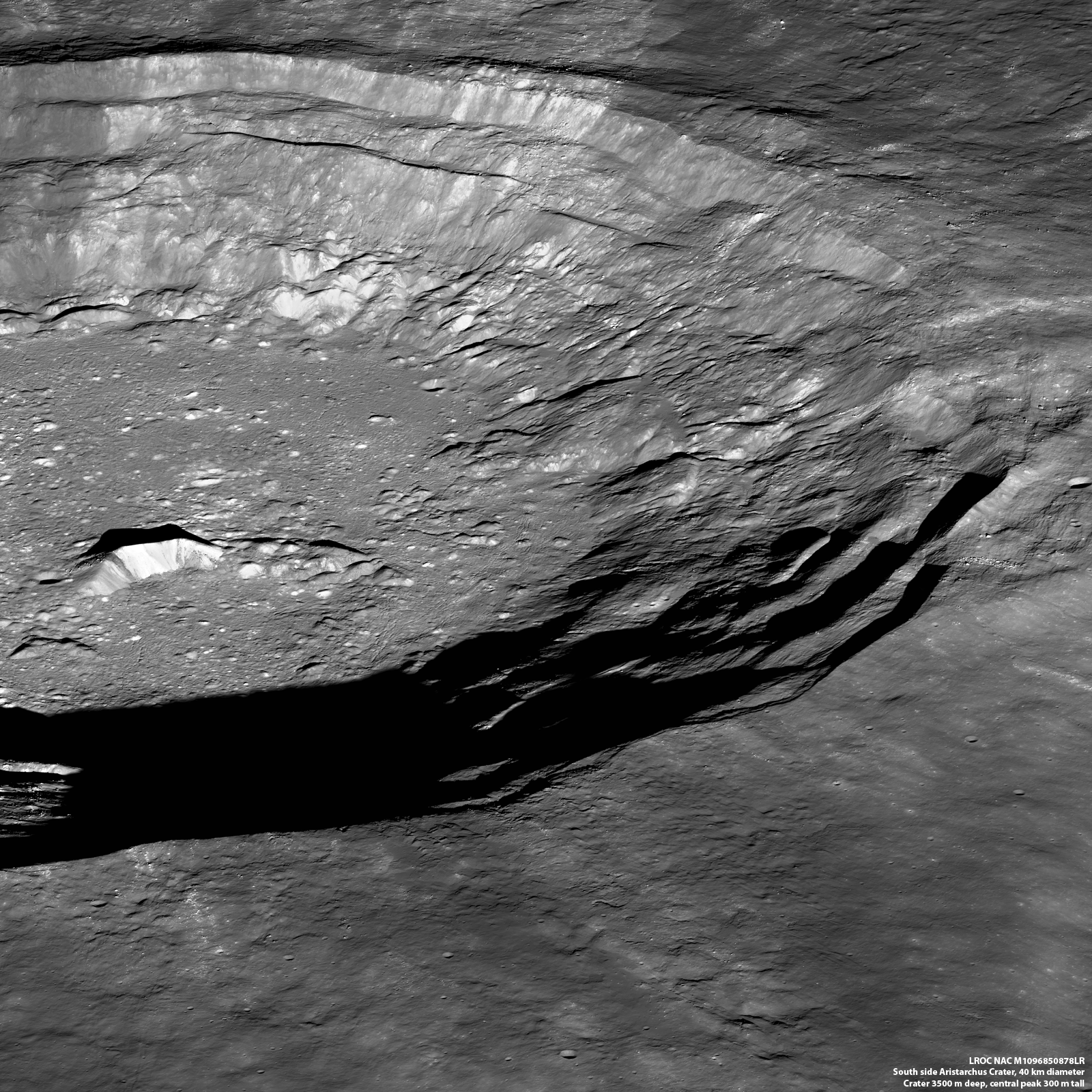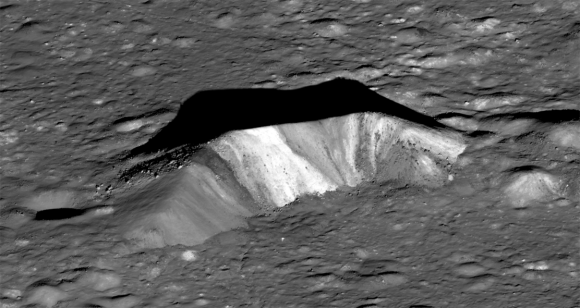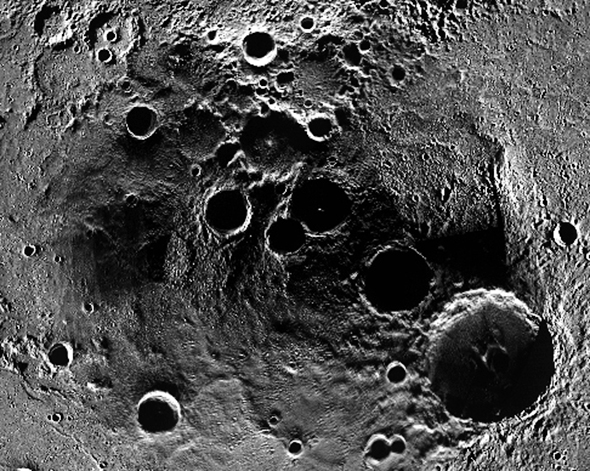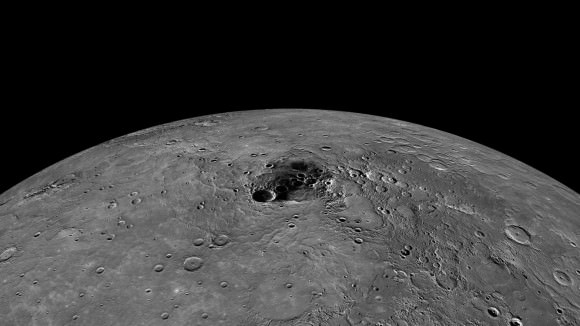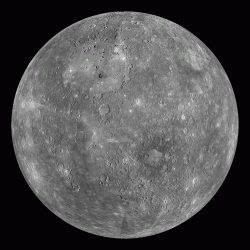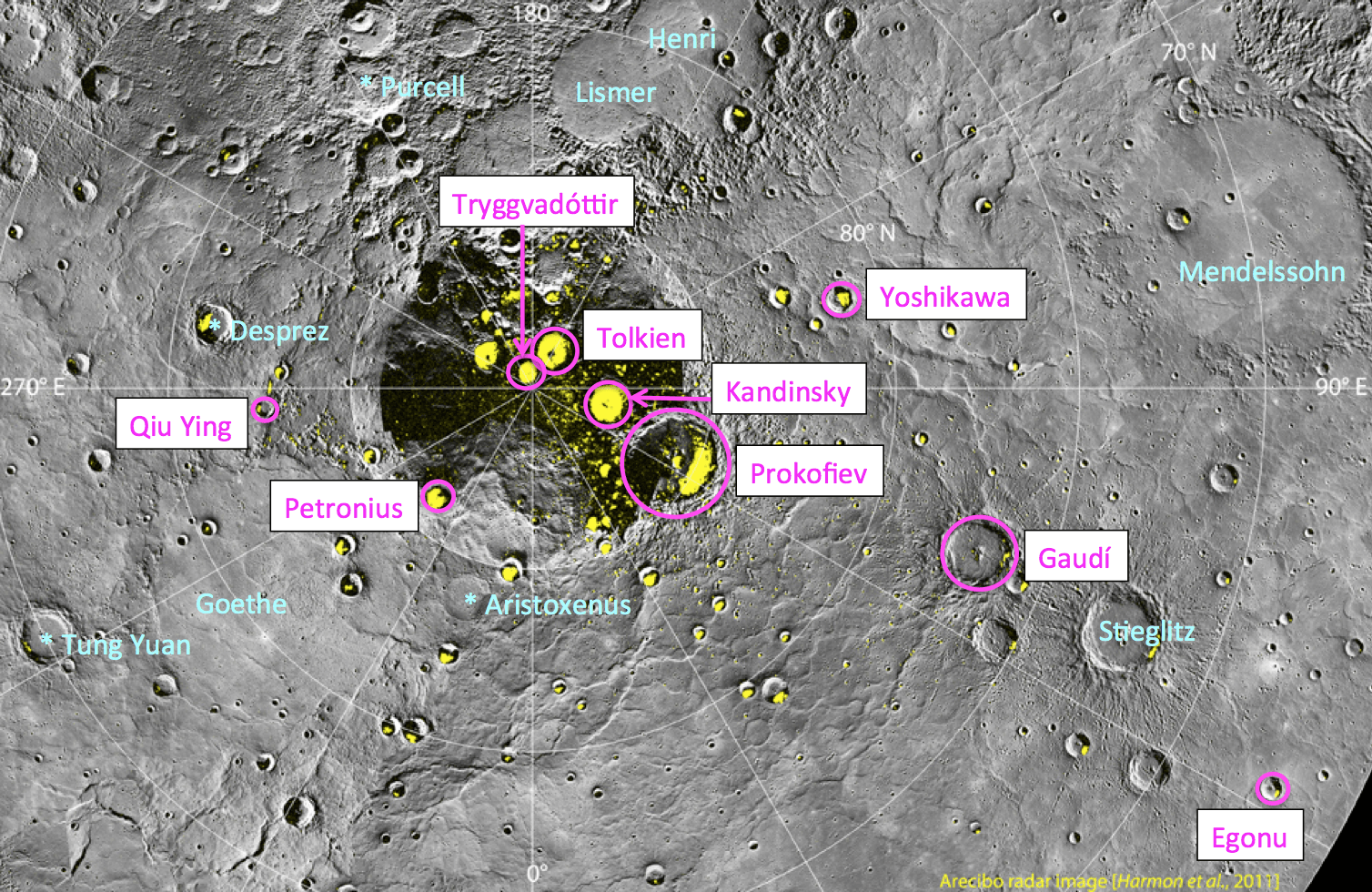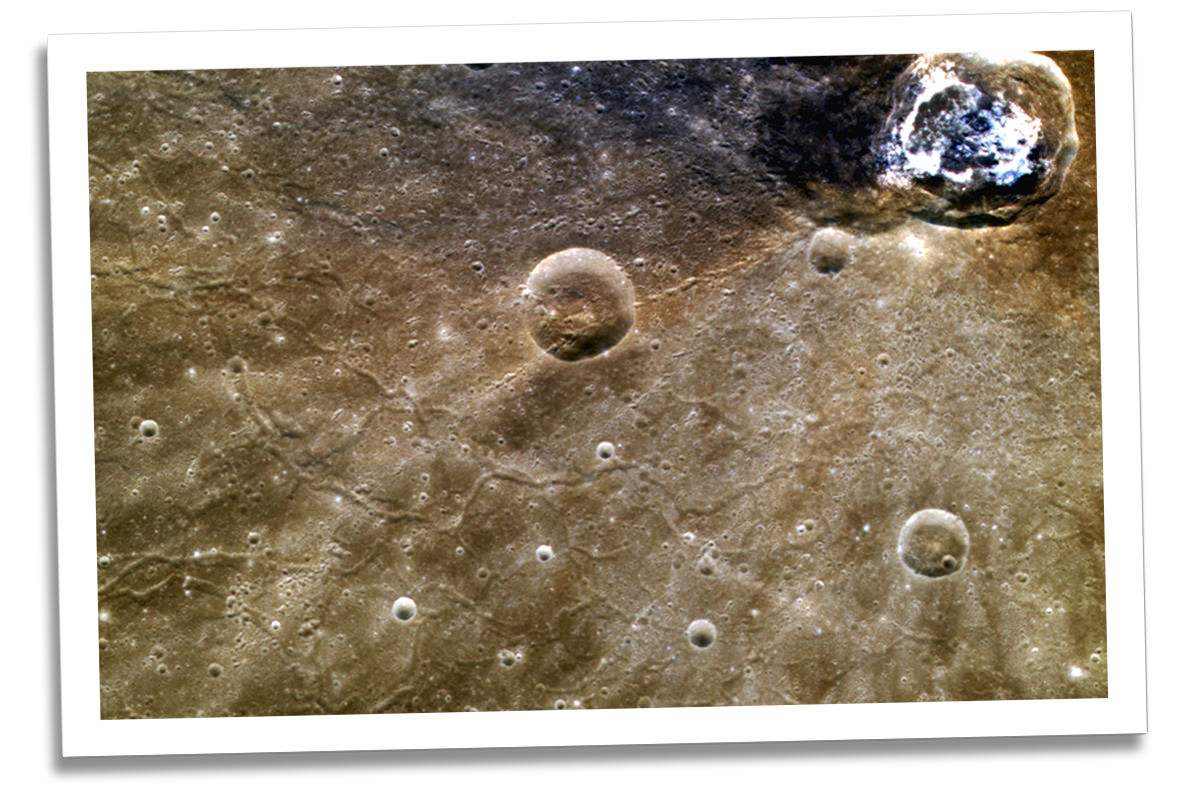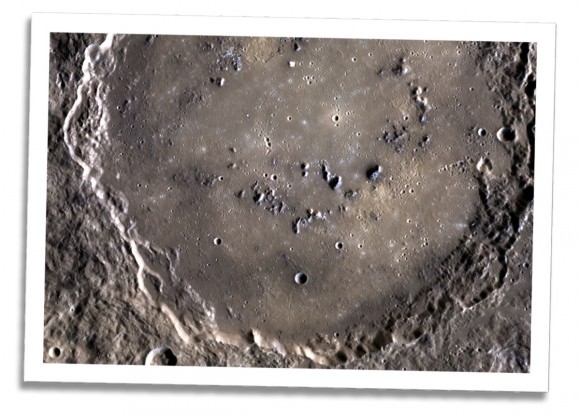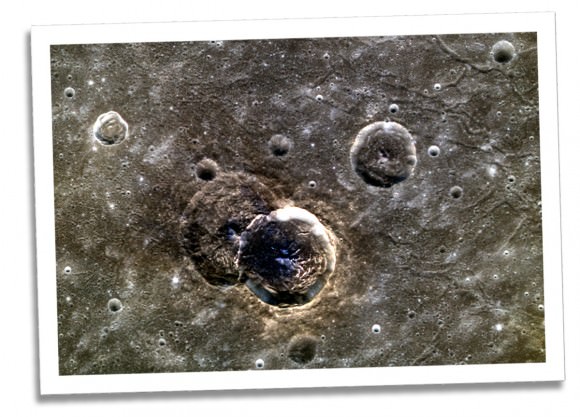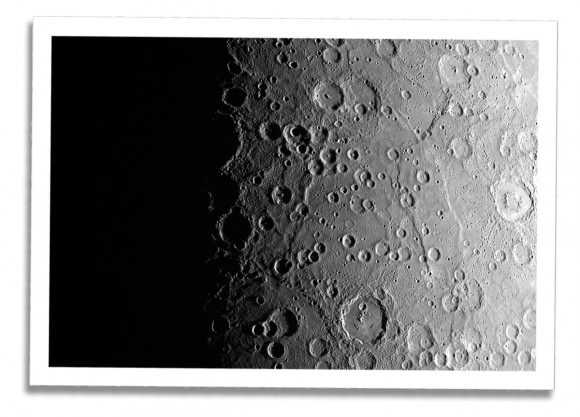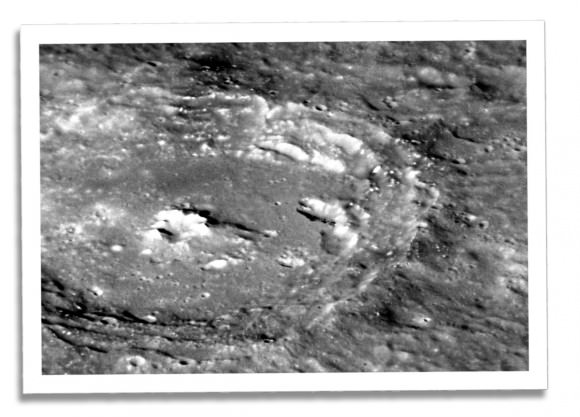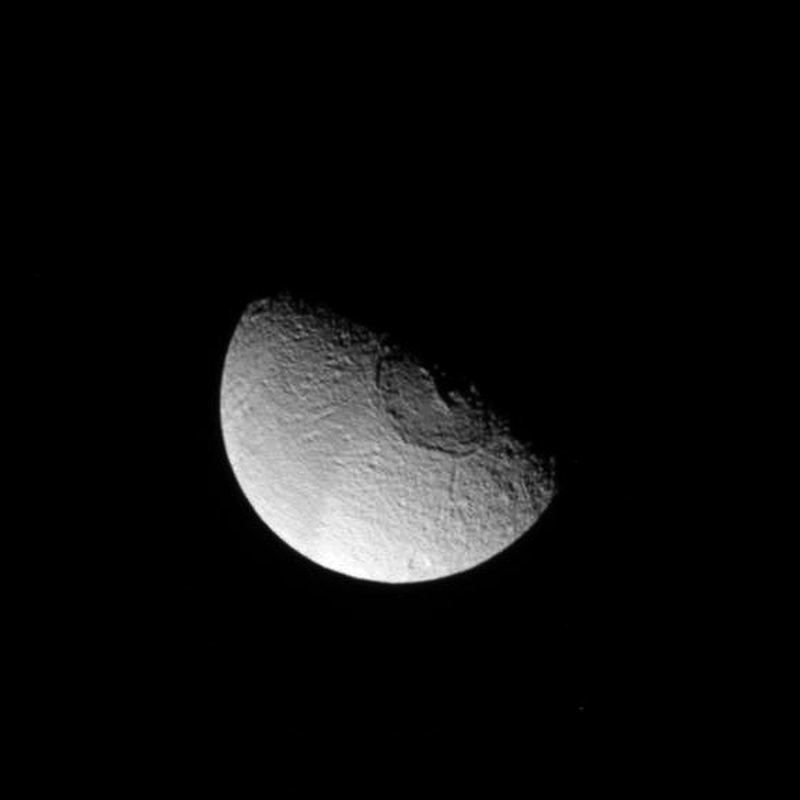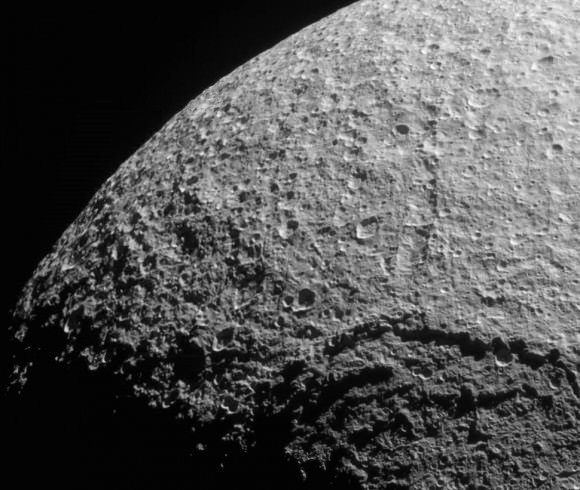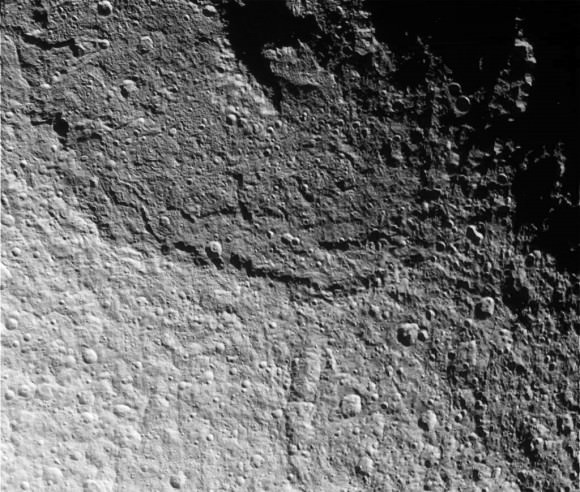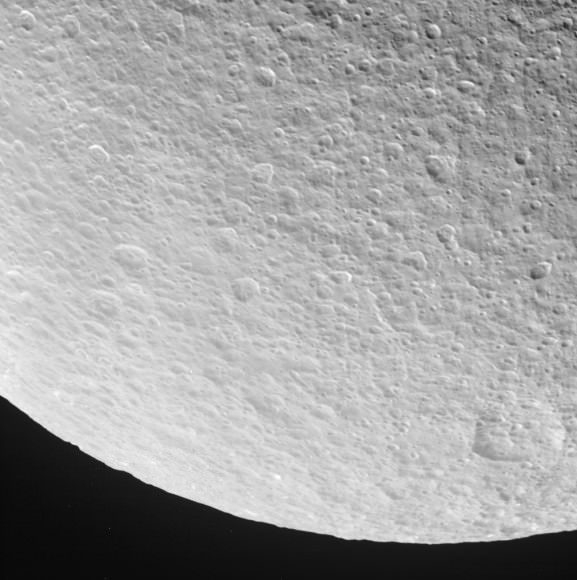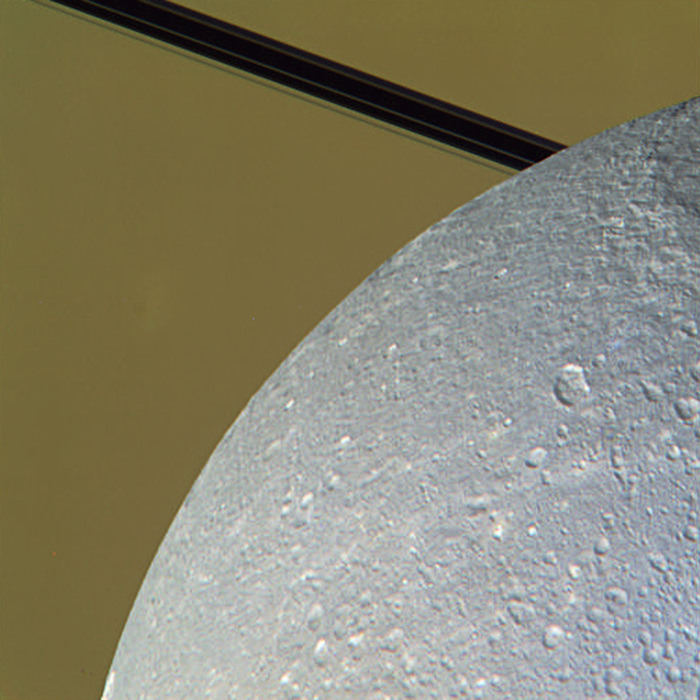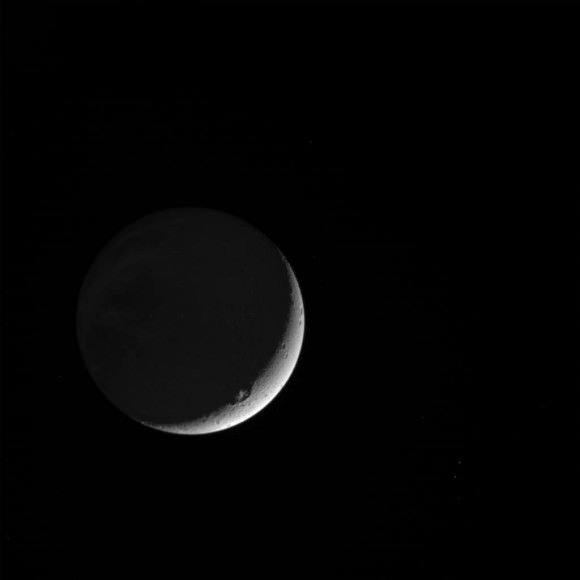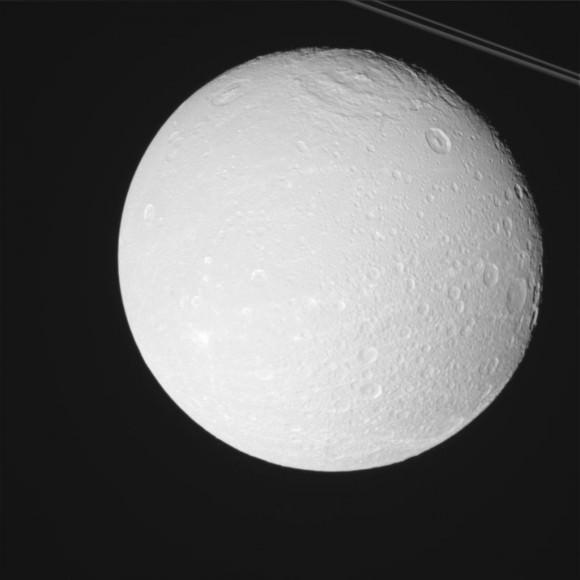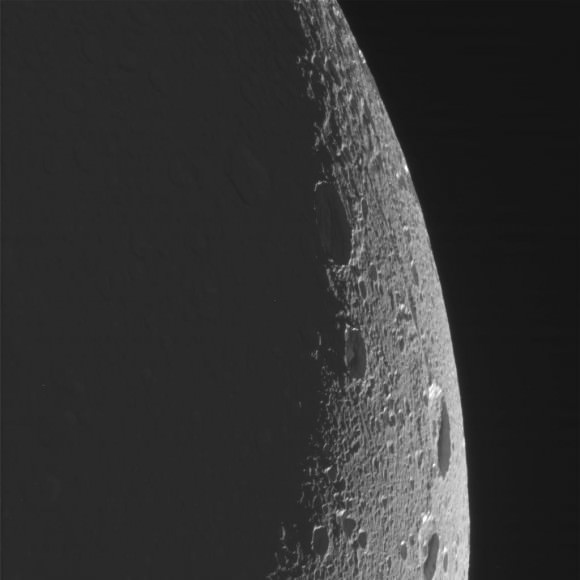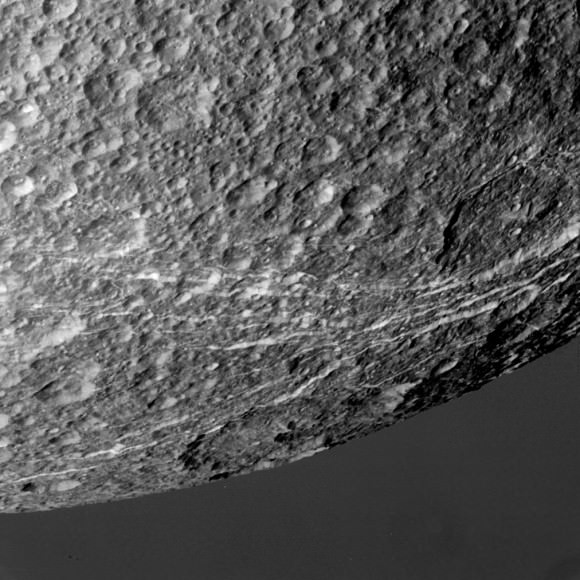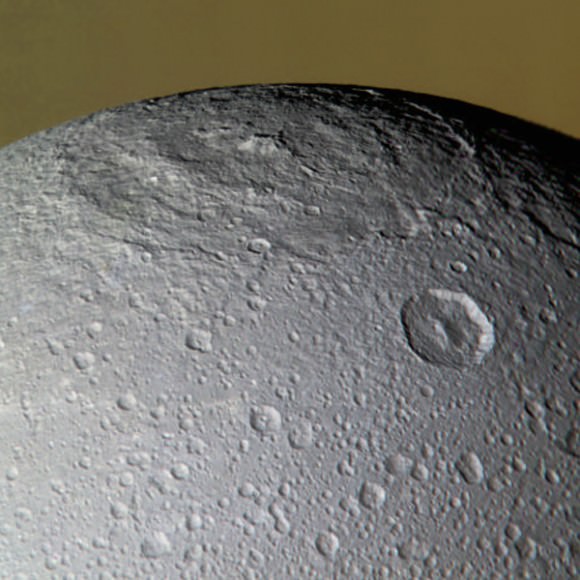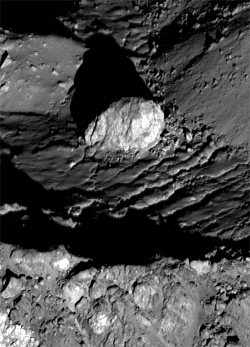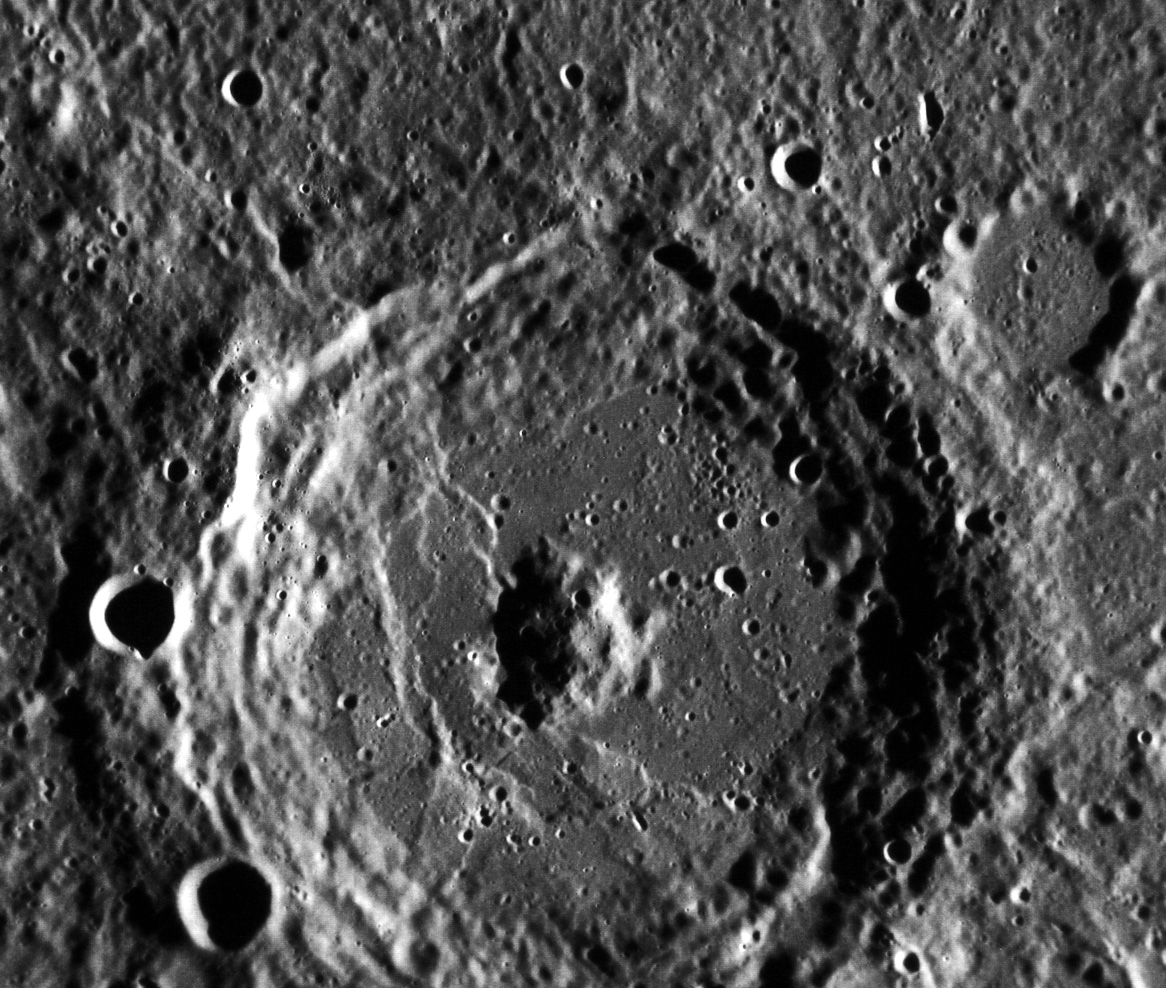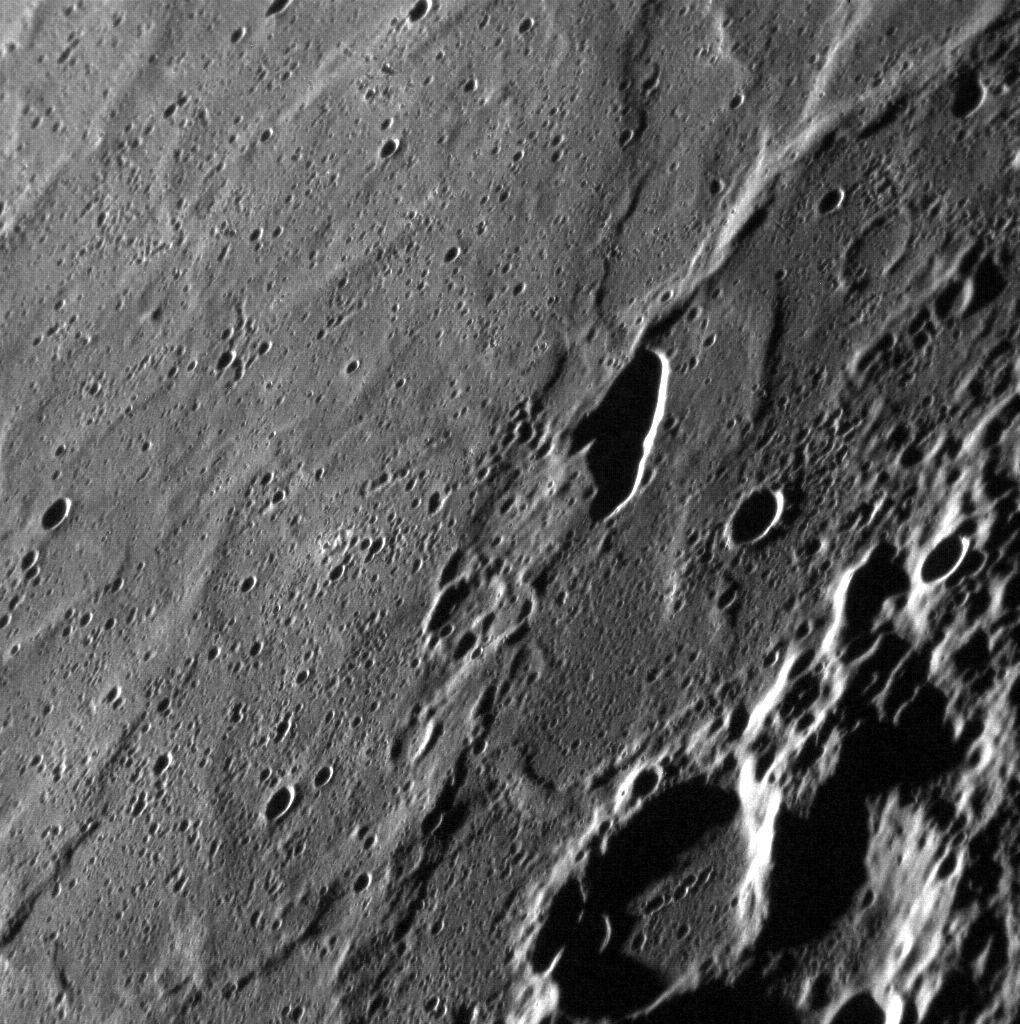LROC view looking obliquely of the south rim of Aristarchus from the west (NASA/GSFC/Arizona State University)
Flying over at an altitude of 135 km, NASA’s Lunar Reconnaissance Orbiter captured this lovely oblique view of the crater Aristarchus, looking down at the 40-km (25-mile) -wide crater’s southern rim from the west.
The broad flank of Aristarchus’ 300-meter (980-foot) central peak and surrounding hills can be seen at left, casting lengthening shadows in the setting sun.
Named after the Greek astronomer who first proposed a controversial heliocentric model for the Solar System in the 3rd century BCE, Aristarchus is a prominent crater located near the Moon’s northwestern limb within the geologically-diverse Oceanus Procellarum — the “Ocean of Storms.” Surrounded by rays of bright ejecta that extend down its stepped rim, the floor of Aristarchus drops 3.7 km (2.3 miles) below the surrounding lunar landscape.
Read more: LRO Lets You Stand on the Rim of Aristarchus Crater
The bright material seen in the ejecta streaks seems to echo the patterns of light and dark material lining the slopes of Aristarchus’ central peak, suggesting that they may be the made of similar material.
Detail of the 4.5-km-long central peak of Aristarchus (NASA/GSFC/Arizona State University)
The impact that created Aristarchus an estimated 450 million years ago excavated subsurface material, melting and spraying it tens of kilometers over the surrounding plateau. It’s thought that the central peak is likely composed of the same stuff, dredged up by the impact and frozen in place.
Future lunar explorers, should they ever visit this region, would be able to collect samples from the base of the central peak and compare them to samples from the bright rays to see if they match up, allowing researchers to learn about the composition of the material underlying the plateau from rocks scattered conveniently around the surface… this is the beauty of such (relatively) recent craters! The digging’s already been done for us.
Read more about this on Arizona State University’s LROC site and explore a zoomable version of the original NAC frame here.

